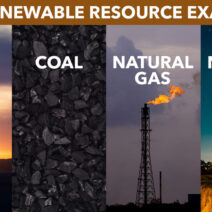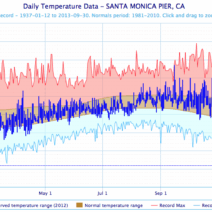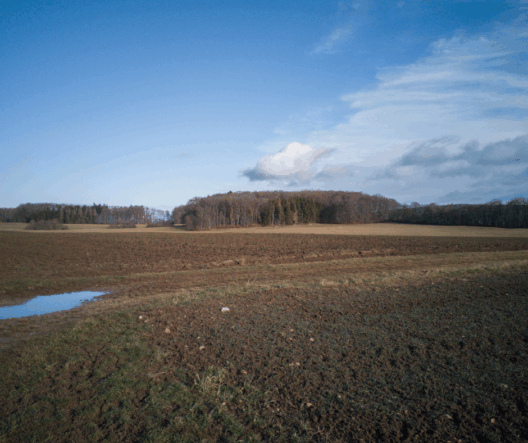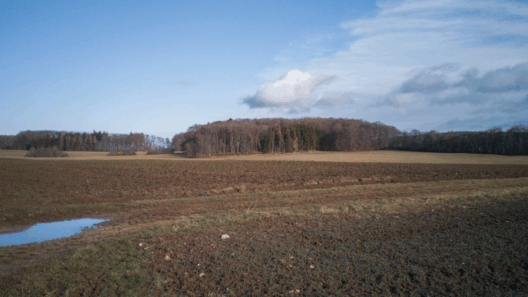Martian canals, those enigmatic formations that snake across the Martian landscape, have long captured the imagination of astronomers and romantics alike. Think of these structures as ancient arteries of water—once pulsating with life-giving liquidity, now reduced to ghostly remnants of a more vibrant era. The allure of these channels does not merely rest in their tantalizing shapes but in the broader narrative they weave about our own planet’s climate dynamics and the haunting specter of climate change. The interplay of geology, mythology, and modern science on Mars provides a compelling lens through which we examine not just the Red Planet but the very nature of climate itself.
While we are familiar with the flood myths that permeate human history, originating from various cultures across the globe, the Martian flood narrative is a tale carved into its rocky terrain. Geological evidence supports theories that vast volumes of water once traversed the Martian surface, carving valleys and channels resembling our own river systems. These findings engender an air of curiosity, prompting questions about climatic conditions that prevailed when Mars was presumed warm and wet. Were these periods of flooding brief but violent, reshaping the topography of Mars in an instant? Or did they represent a longer duration of time, where lakes and rivers ebbed and flowed across the landscape?
Scientific research suggests that these Martian floods could be linked to atmospheric changes that might resonate with phenomena observed on Earth. In essence, the processes driving the climate of Mars, though occurring in an utterly alien environment, mimic the challenges we face with our own atmosphere. A planet that once teemed with liquid water is now an arid expanse, its climate a stark reminder of transience. Such parallels compel us to ponder: if climate change can alter a planet whose orbit sits so far from the Sun, what impact could human activities be having on our own world?
Consider the Martian landscape housing a charred narrative of transformation. The channels are more than scars; they are chroniclers of potential civilization lost. Every canyon and fissure acts as a testament to the power of water—and, by extension, a legacy of climate-induced metamorphosis. The Martian surface bears witness to intense climatic shifts that many scientists believe were triggered by a combination of volcanic activity, changes in solar radiation, and a reduction in atmospheric pressure. Such considerations foster an urgent discussion about vulnerability—if Mars can fall prey to such catastrophic changes, could Earth face a similar fate?
Tracing the similarities, we find ourselves pondering the role of climate change on Mars, intertwined with the existential crisis our planet now confronts. Today’s climate change is inextricably linked to anthropogenic actions, primarily the combustion of fossil fuels and deforestation, obscuring nature’s immutable balance. A planet like Mars, stripped of its atmospheric shielding, offers a stark analogy. In this sun-baked silence, where rivers once danced, lies the cognitive dissonance that resonates across the cosmos. It compels us to reflect on the importance of stewardship of our own home.
Moreover, leading scientists have posited that ongoing exploration of Mars may yield insights into planetary resilience. For instance, the discovery of hydrated minerals hints at water’s presence and its complex interactions with Martian geology. As researchers delve into the sedimentary layers that suggest a network of ancient rivers and lakes, they articulate a begrudging respect for our planetary neighbor. Metaphorically, Mars becomes a mirror reflecting our actions back at us—an illustration of how neglect can beget desolation, echoing myths of once thriving civilizations that vanished under the weight of mismanagement.
As we look to Mars, we encounter the intricate fabric of myths woven into the discovery narratives of these canals. Long viewed skeptically, early reports of Martian canals stirred intrigue. Some scientists suggested intelligent life carved these channels, transforming a scientific inquiry into an interstellar romance steeped in the potential for connection beyond our world. Although fantasies of sentient Martians have dissolved, the fascination lingers. In the synaptic connections of our quest for knowledge, those who dreamt of Martian civilizations bridge the gap between myth and reality, underscoring a compelling sense of universal shared destiny.
In current scholarly discourse, the question of climate change on Mars is not merely academic; it serves as an urgent warning. Weaving through our understanding of Martian floods is an acknowledgment of the perils of ignoring climatic shifts. By examining how Martian water shaped the landscape in conjunction with the lessons of its demise, Earth can glean valuable insights—warnings wrapped in geological evidence. Living in an age seemingly defined by relentless industrial expansion, can lessons gleaned from Mars fortify our resolve to alter our path before it is too late?
In summary, the Martian canals and their associated flood myths present a richly textured narrative entwined with Earth’s own climatic discourse. They beckon us to consider what remains when water recedes and what knowledge can be gleaned about resilience and vulnerability. The future of our planet, much like that of Mars, teeters on the precipice of possibility. Will we heed the warning inscribed in the sediment of another world? Time alone holds the answer, yet it is the journey of understanding these intrinsic connections that empowers humankind to confront its own climate realities.





